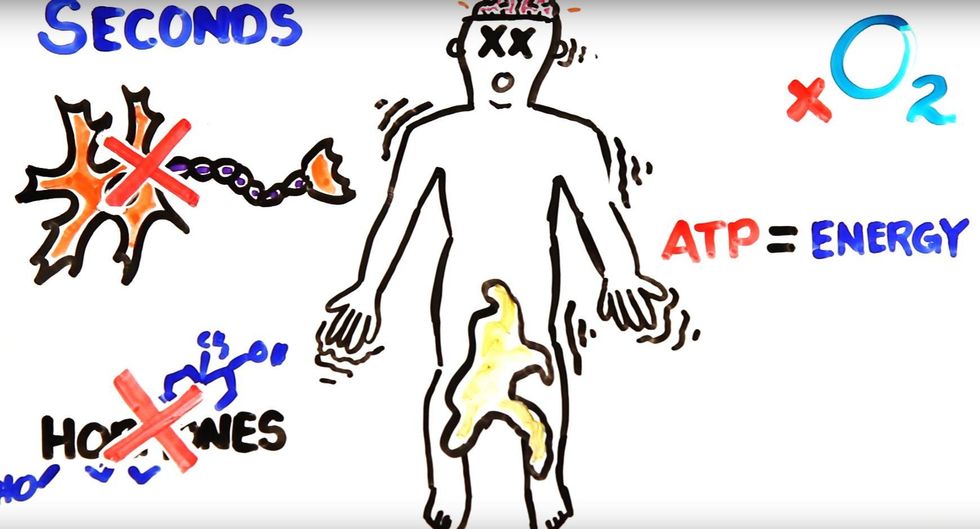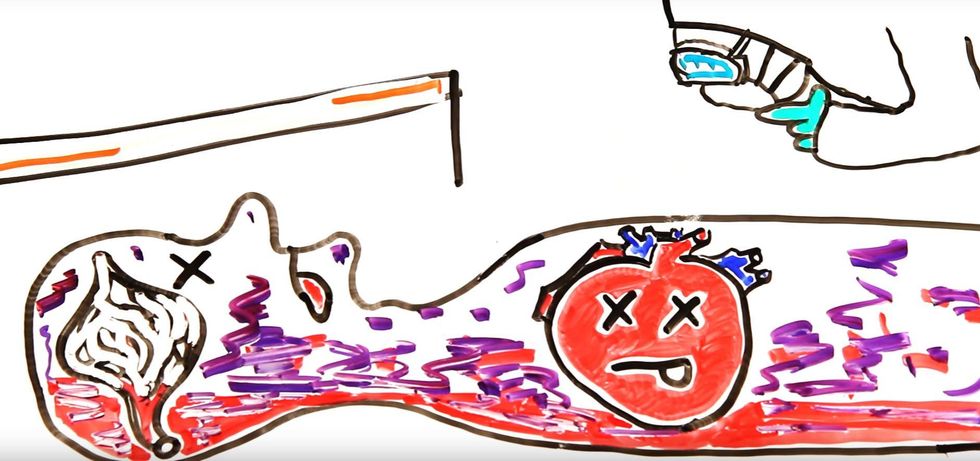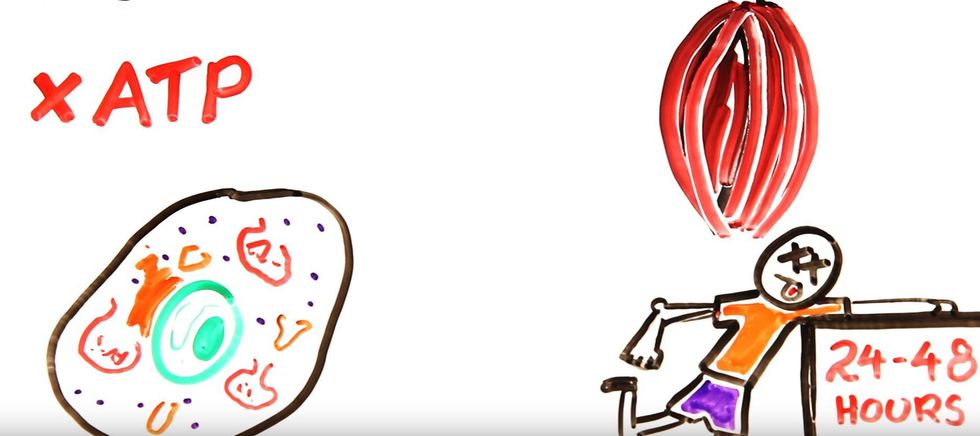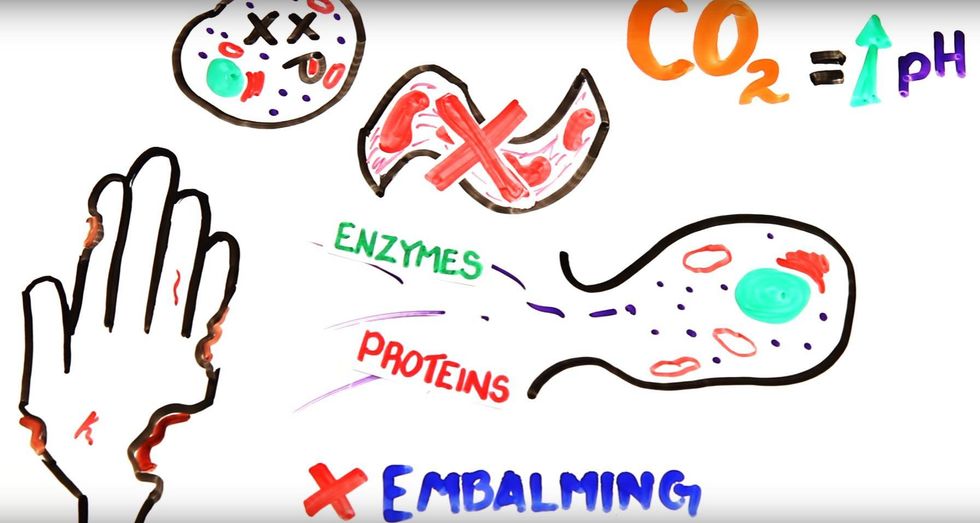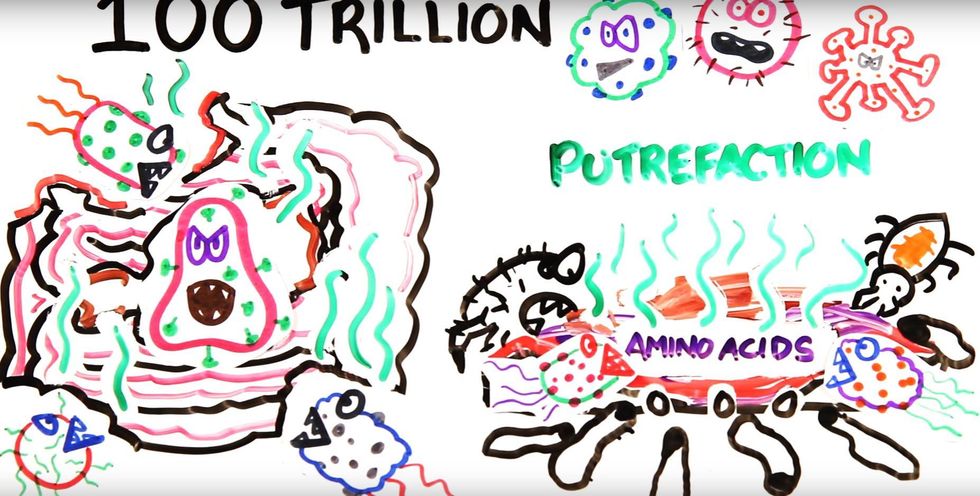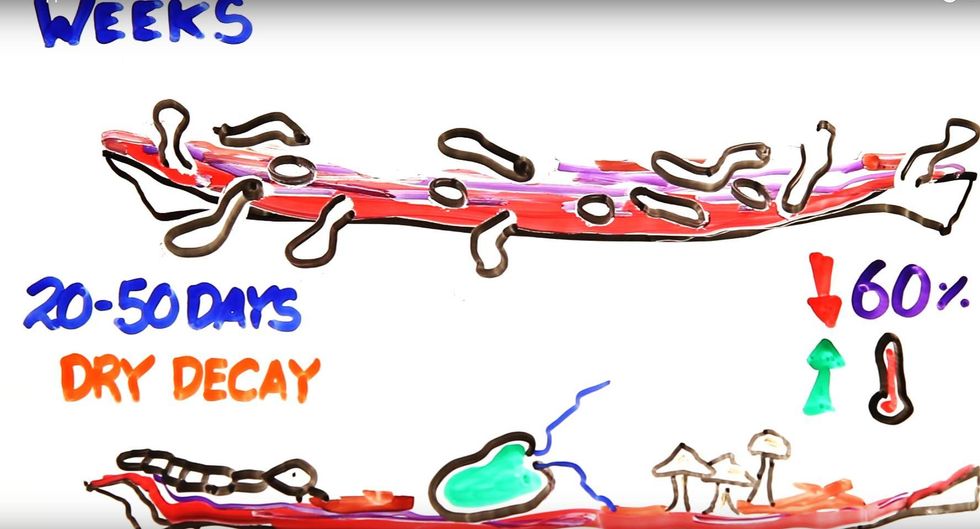
No matter how differently cultures celebrate and mourn their dead, one thing is absolute: the body dies in exactly the same way.
The people over at AsapScience decided to break it down for you.
Death, it seems, is rather a complicated affair… this is what your body goes during and after.
1.
The last bit of oxygen in your body is used up, and brain activity ‘surges’ briefly as neurons stop working and the brain stops secreting hormones that regulate body function.
The last of the energy stores (ATP) is used up and the sphincter relaxes, causing the body to release urine and excrement.
2.
Between 15 and 25 minutes after death, the lack of blood flow to capillaries causes the skin to go pale. The heart is no longer beating, so blood is not being propelled around the body. As a result, the blood pools in the lower parts of the body.
After 12 hours, the skin will have reached maximum discoloration (or a reddish purple colour).
3.
Calcium leaks into muscle cells, binding to proteins which are in charge of muscle contraction. The stiffness – referred to as rigor mortis – sets in three to six hours after death, and lasts for between 24 and 48 hours.
4.
Dead cells and carbon dioxide causes the PH level of your skin tissue to rise. This makes the cell membrane weak and it bursts, releasing proteins and enzymes which further break down the surrounding tissue. This is the process of decomposition.
5.
Micro-organisms start to break down your body. Bacteria in the gastro-intestinal tract eats through the abdominal organs. This is called putrefaction, and it causes the ‘smell of death’ associated with a dead body.
The breakdown of amino acids creates other strong-smelling acids which attract insects that lay eggs in the rotting tissue.
The eggs hatch after 24 hours and the maggots eventually consume 60 per cent of the body tissue over a number of weeks.
6.
Finally, the maggots create holes in the rotting flesh, which allow decomposition fluids and gases to escape.
After a month and a half, beetles and fungi further consume the remains. This is called ‘dry decay’ which can take up to one year.
Eventually, every part of the body will have been broken down and used.
Here's the video:
Happy Halloween!
More:The scariest thing you'll read this Halloween
More:A Burger King dressed up as McDonald's for Halloween
